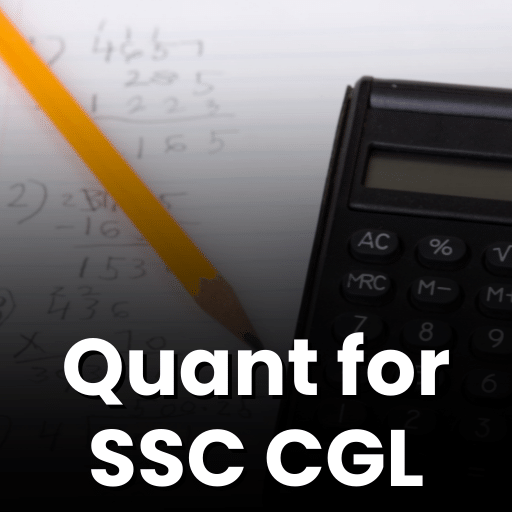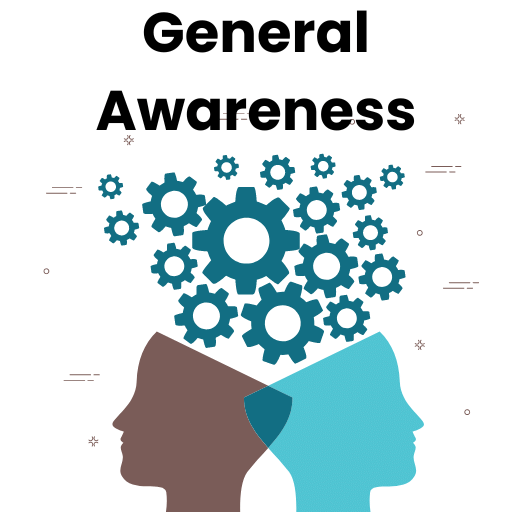Introduction & Examples: Alphabet Series | Logical Reasoning (LR) and Data Interpretation (DI) - CAT PDF Download
Introduction
Alphabet test is a vital part of reasoning tests, commonly found in competitive exams. It involves deciphering the position of letters, words, or numbers within a jumbled series. Understanding the sequence of English alphabets from A to Z is crucial for tackling these questions effectively. This section tests your ability to identify the placement of elements in relation to one another. Mastering alphabet reasoning is essential for excelling in reasoning-based examinations.
Types of Alphabet Reasoning Questions
1. Alphabet Series
- Focuses on groups of letters with operations such as arranging in dictionary order, reverse order, or interchanging letters.
- Example: Which letter comes immediately after the letter P in the reverse order of the alphabet?
2. Mixed Series
- Combines numbers, characters, and symbols in sequences, challenging you to identify patterns and rules governing the arrangement.
- Example: E # 4 Y Q % G 8 A 5 * U ! B 2 9 > X + P 3 Z ^ | S 7 M C 6 @ J K : W
In the given series, which of the following elements is fifth to the right of the twelfth element from the left end?
3. Creating New Words
- Requires forming meaningful words from provided letters and sometimes asks how many such words can be made.
- Example: Which of the following is the third letter of the meaningful English word which can be formed using (each letter once) first, third, fourth, sixth, eighth and ninth letters of “ASTRONAUT”?
- The specified positions are:
- 1st letter: A
- 3rd letter: T
- 4th letter: R
- 6th letter: N
- 8th letter: U
- 9th letter: T
So the letters we have are: A, T, R, N, U, T.
Now, we need to form a meaningful English word using these letters. One such word is "TRUANT". [ refers to a student who stays away from school without leave or explanation.]
The third letter of the word "TRUANT" is U.
Thus, the answer is U.
4. Position of Letters and Numbers in a Word
- Asks you to identify pairs of letters or digits with a specific number of letters or digits between them in the alphabet or number sequence.
- Example: How many such pair(s) of letters are there in the word ‘POCKETBOOK’ which have as many letters between them as in the alphabetical series as we move from left to right?
5. Fill in the Blanks Series
- These types of series consist of small letters which follow a specific pattern or series. Some spaces are left blank in between the series given. We have to fill in the blanks from given options to make a pattern.
- Example: pq_ _ qpp_ _ pq _
Important Points
(i) Position number of letters in English

(ii) Position number of letters in English alphabets in reverse
(iii) A, E , I, O and U are Vowels of English Alphabets and the remaining letters are Consonants of English Alphabets.
(iv) A → M (A to M) letters are called first half of English Alphabets.
(v) N → Z (N to Z) letters are called second half of English Alphabets.
(vi) From A → Z (A to Z) letters are called 'left to right' or 'to right' in English Alphabets.
(vii) From Z → A (Z to A) letters are called 'right to left' or 'to right' in English Alphabets.
It is important to note that while solving the questions of letter series, if you keep in mind the forward and backward position of all the alphabets along with its number, you can save a lot of time.
The following two concepts in order to recall the position of alphabet easily.
 |
Download the notes
Introduction & Examples: Alphabet Series
|
Download as PDF |
1. Concept of EJOTY
The concept of EJOTY represents the position of the alphabet counting from the left at an interval of 5 letters:
Each letter in the term EJOTY represents the position which is multiple of 5.
2. Concept of VQLGB
Just like the concept EJOTY, the concept of VQLGB represents the position of the alphabet counting from the right at an interval of 5 letters:
Alphabet Reasoning Questions with Answers
Here are some illustrative examples to help you grasp the types of alphabet reasoning questions commonly encountered in competitive exams. By familiarizing yourself with these examples, you can gain a better understanding of the diversity of questions and the skills required to excel in alphabet reasoning questions of competitive exams.
Solved Examples
Example 1: Each consonant of the word ‘TERMINATION’ is changed to the previous letter in the English alphabetical series and each vowel is changed to the next letter in the English alphabetical series. If the new alphabets thus formed are arranged in alphabetical order (from left to right), which of the following will be the sixth letter from the right end?
Solution: The given word:
T E R M I N A T I O N
Applying the above condition, we have a new word:
S F Q L J M B S J P M
Now, arranging in alphabetical order (from left to right)
B F J J L M M P Q S S
Hence, M is sixth from the right.
Example 2: Directions: Study the following numbers carefully and answer the questions given beside:
427 946 738 596 857
If the digits of all the numbers are to be arranged in descending order from right to left within the number, then which of the following numbers will be the third highest?
Solution: The given sequence:
427 946 738 596 857
Arranging all the digits of each number in descending order from right to left within the number, we get:
247 469 378 569 578
Here, the third highest number is 469.
Example 3: A B C D E F G H I J K L M N O P Q R S T U V W X Y Z .
Which letter is the eighth letter to the right of the letter and which is the tenth letter to the left of the alphabet’s last but one letter?
(A) X
(B) W
(C) I
(D) H
Solution: Option B.
The last but one letter of the alphabet is Y in the given alphabet.
O is the tenth letter to the left of Y. W is the eighth letter to the right of O.
Example 4: WYB, XUD, YQF, ...
(A) HZM
(B) HCZ
(C) ZMH
(D) None of these
Solution: Option C
Let's analyze the given series: WYB, XUD, YQF, ...
We will break down the pattern by looking at each position in the terms:
First letters: W, X, Y
- The first letters increase by one alphabet each time (W → X → Y).
- Following the same pattern, the next letter should be Z.
Second letters: Y, U, Q
- The second letters decrease by two alphabets each time (Y → U → Q).
- Following this pattern, the next letter should be M (Q → M).
Third letters: B, D, F
- The third letters increase by two alphabets each time (B → D → F).
- Following this pattern, the next letter should be H (F → H).
So, the next term in the series is ZMH, which matches Option C.
Example 5: x_ p _ y _ _ pzy _ _ pzy
(A) xyyyzz
(B) xyzyzy
(C) yxzyxy
(D) yzxyxy
Solution: Option D
Let's analyze the pattern x_ p _ y _ _ pzy _ _ pzy.
- We see pzy repeating, so the missing letters might follow a logical cycle.
- Starting with x, the first blank can be filled with z, following a possible alternating pattern.
- After p, fill the next blank with y, completing the section as x z p y.
- Continuing the pattern, the next blank could be x and the next y, forming x z p y x y.
- Now, since the sequence pzy repeats at the end, the pattern is x z p y x y p z y p z y.
This corresponds to Option D: yzxyxy. Hence, D is the correct answer.
Why other options fail:
- Option (A): xyyyzz → Disrupts repetition (e.g., xypyy...).
- Option (B): xyzyzy → Creates xypyzy..., breaking the pattern.
- Option (C): yxzyxy → Starts with xyx..., which doesn’t align.
Understanding the Language of Alphabet Test Questions
Understanding the language used in Alphabet Test questions is crucial for interpreting the instructions and solving the problems accurately. Here are explanations of some commonly used terms and phrases in Alphabet Test questions:
- Precede: To "precede" means to come before or be in front of. In Alphabet Test questions, if one letter precedes another, it means it appears in the alphabet before the other letter. For example, if "A precedes B," it means that A comes before B in the alphabetical order.
- Succeed: To "succeed" means to come after or follow. In Alphabet Test questions, if one letter succeeds another, it means it appears in the alphabet after the other letter. For example, if "B succeeds A," it means that B comes after A in the alphabetical order.
- Interchange: When you're asked to "interchange" letters, you are required to swap the positions of specific letters within a word or sequence based on the provided instructions. For example, you may be asked to interchange the first and last letters in a word like "RAT," which would result in "TAR."
- Dictionary Order: "Dictionary order" refers to arranging words or letters as they would appear in a standard dictionary. In English, this means arranging words based on the alphabetical order of the letters.
- The Vowels are A, E, I, O, U
- The Consonants are B, C, D, F, G, H, J, K, L, M, N, P, Q, R, S, T, V, W, X, Y, Z
Tricks to Solve Letter and Symbol Series
- To solve the Letter and Symbol Series, start by understanding the alphabetical order from A to Z. Each letter gets a number value from 1 to 26, with A being 1 and Z being 26.
- Sometimes, questions will mix numbers, letters, and symbols, so be careful to understand what's asked.
- You might encounter questions focusing on consonants, vowels, or letter positions. Pay attention to these details. Questions often provide letter arrangements, and you need to respond with the same pattern.
- In number series, you'll get a sequence of numbers with some blanks. Understand the sequence to fill in the blanks correctly.
|
93 videos|123 docs|94 tests
|
FAQs on Introduction & Examples: Alphabet Series - Logical Reasoning (LR) and Data Interpretation (DI) - CAT
| 1. What are some important points to remember when solving Alphabet Reasoning Questions? |  |
| 2. How can one recall the position of alphabets easily when solving Alphabet Reasoning Questions? |  |
| 3. Can you provide some examples of Alphabet Reasoning Questions with Answers? |  |
| 4. How can one understand the language of Alphabet Test Questions better? |  |
| 5. What are some tricks to solve Letter and Symbol Series questions effectively? |  |





























